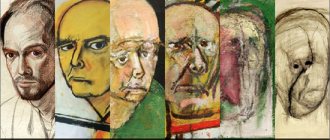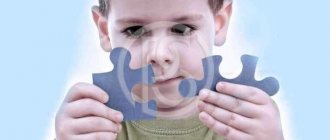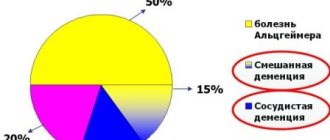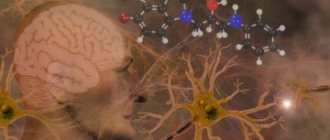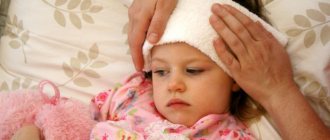Previously available classifications of dementia (acquired dementia) had many shortcomings and inaccuracies. A simple division into senile and atypical forms did not allow taking into account the mechanism of development and the cause of the disease, and disagreements arose between doctors when formulating the diagnosis. Research in the field of psychiatry and neurology has made it possible to create a new clinical classification that fully covers the variety of forms of acquired dementia. However, some old classifications have also not lost their significance: they are used to clarify the severity of the disease and the location of the lesion in the brain.

How is schizophrenia different from dementia?
Schizophrenic dementia is fundamentally different from organic dementia, caused by degenerative processes in the brain.
Differential diagnostic criteria are presented in Table 1. Table 1. Differential diagnostic criteria for schizophrenic and organic dementia
| Criteria | Schizophrenic dementia | Organic dementia |
| Memory and intelligence | Safe | Sharply reduced |
| Emotions | Flattening, coldness | Explosiveness, tearfulness, emotional variability |
| Attitude to comfort | Indifference | Increased attention |
| Reversibility of the process | Eat | Absent |
| Personality structure | Tendency to decay | Sharpening personality traits |
| Dissociation/loss of mental processes | Dissociation predominates | Prolapse predominates |
Complications
Sometimes people with dementia show depression, but this is also not a clear symptom of dementia in children, although it may raise suspicions about developing dementia. This depression mainly occurs in the early stages of the disease leading to subsequent dementia. The progression of the disease is accompanied by an inevitable deterioration in mental abilities, but depression is much less common.
In childhood, dementia and mental retardation are related concepts.
Dementia, most often, is a consequence of various diseases, so it should only be treated by a specialist, a psychiatrist and a neurologist.
Causes of dementia in schizophrenia
The causes of schizophrenic dementia have not yet been studied. There are a number of predisposing factors:
- hereditary predisposition (high risk percentage if the patient’s parents or twin had schizophrenic dementia);
- hormonal changes (at debut at puberty);
- brain intoxication with medications (overdose of antipsychotics that relieve the positive symptoms of schizophrenia - delusions, hallucinations);
- incorrect implementation of pyrogenic, insulin comatose, electroconvulsive therapy during attacks to suppress affect;
- forced isolation of the patient during a long stay in the hospital (hospitalism syndrome), during which the patient experiences discomfort, everyday embarrassment, and experiences separation from loved ones;
- mechanisms of psychological defense: regression (return to earlier forms of behavior that are safe for the patient), repression (subconscious “forgetting” of stressful events, pushing them out of consciousness).
Prevalence of the disease and its causes
Dementia occurs not only in older people, but also in children. According to medical statistics, the level of childhood dementia in Russia is 1.64% .
For comparison: in Canada this figure is 1.12%, in Finland 1.19%, in the USA 1.2%, in Australia 1.43%, in China 1.71%.
Childhood dementia can be congenital or acquired. Its main reasons are:
- infectious diseases suffered by a woman during pregnancy;
- premature birth;
- asphyxia and injuries received during childbirth;
- social and pedagogical neglect at an early age;
- genetic diseases;
- traumatic brain injuries, bruises and concussions;
- encephalitis, meningitis, human immunodeficiency virus (HIV);
- disturbance of vascular blood flow and insufficient nutrition of brain tissue.
It is not always possible to establish the root cause of dementia in children and adolescents.
Solving this complex problem requires the help of qualified specialists and comprehensive diagnostics of the whole organism.
Classification
Depending on the degree of personality disintegration, schizophrenic dementia is:
- apathetic (dementia of impulses) - a sharp decrease in volitional activity, motives, loss of interests, indifference, lack of initiative;
- organic (similar in course to dementia of organic etiology). Characterized by primitive thinking, lack of criticism of one’s condition, rapid exhaustion of cognitive functions - when trying to concentrate, the need to count something, quickly decide, the patient gets tired;
- in the form of ruination syndrome - complete collapse of higher mental functions, primitive reflexes (drinking, eating, sexual) are preserved;
- in the form of personality disintegration syndrome - loss of unity and coordination of the personality structure (actions, emotions, thoughts), expressed in the loss of previous social relationships, untidiness in clothing, failure to comply with hygiene standards, sloppiness, vagrancy (a person “sinks”, resembles a homeless person).
How to sue for personal injury. Defective goods
Thirteen-year-old Mokhov, suffering from mild mental retardation, met seventy-year-old Savin and, threatening him with a toy pistol, demanded money from him. Savin replied that he had no money with him. Are there any signs of a crime in Mokhov’s actions and is it possible to bring him to criminal responsibility? Criminal Code of the Russian Federation Art. Mandatory elements of the crime in criminal law are grouped according to the elements of the crime, of which there are only four: object, objective side, subjective side and subject of the crime. In the absence of at least one of these elements, it is impossible to talk about the act as a crime and about the occurrence of criminal liability for it, see. In our case, Mokhov is a minor suffering from mild mental retardation, most likely, this means debility - a mild degree of mental retardation.
Clinical picture
The first manifestations of schizophrenic dementia may debut against the background of a psychotic state. Sick:
- disoriented in space, rushing about, anxious, forgetting where he is;
- confuses the purpose of household items;
- childish behavior is observed - the adult patient makes faces, fools around, grimaces, jumps on one leg;
- imitates animals: barks, meows, crawls on all fours, laps soup from a bowl, eats from the floor;
- counting, writing, and reading skills are impaired;
- when performing neurodiagnostic tasks, confuses the tip of the nose with the earlobe, shows lips instead of teeth;
- forgets the names of objects, explaining their meaning;
- pronounces correctly composed sentences that have no meaning;
- after motor stimulation, retardation and immobility are possible.
The condition is restored after treatment. With frequent attacks and ineffectiveness of therapy, there is an increase in negative symptoms up to a persistent schizophrenic defect, characterized by a decrease in will, motor activity, lack of motivation to action, emotional indifference, coldness, loss of the ability to empathize, lack of motivation to act, and sloppiness.
The nature of dementia
Dementia can be acquired or congenital, but even congenital dementia is preceded by a considerable number of factors. In order to more accurately determine the type and type of dementia, a number of studies were conducted that helped determine the nature of dementia.
Organic. This type of dementia is caused by characteristic somatic changes in the neurons of the cerebral cortex. Often, not only neural connections are disrupted, but also the mechanisms of impulse transmission between neurons. Such pathological changes lead to atrophy of brain cells, subsequently causing not only dementia, but also other psychopathological changes.
Epileptic dementia - to some extent, it is not entirely correct to call this type dementia, since neural connections are not disrupted, and the IQ drops slightly. The very way of thinking changes, and exactly the priorities. Priority shifts to the little things. To a patient with epilepsy, everything important begins to seem unimportant, and on the contrary, various trifles of everyday life take on an extraordinary scale for him. The ability to concentrate decreases. This type of dementia is the only one that can be treated with medication. Treatment of epileptic dementia involves the presence of specific psychotherapeutic trainings that allow you to focus your thoughts without concentrating. This process allows for complex inferences to be made using epileptic labyrinthine thinking. As a result, thanks to deconcentration (a special therapeutic technique for those suffering from epileptic dementia), it is possible to resocialize the individual.
Schizophrenic dementia: despite similar symptoms to epileptic dementia, such dementia is of a completely different nature and cannot be treated. Schizophrenic dementia affects the organics of neurons by changing the mechanisms of impulse transmission without changing the structure of the neuron itself. At the same time, dementia itself often occurs not because of manifestations of schizophrenia, but because of drugs of the Neuroleptic class, which completely suppress brain activity. In some cases, schizophrenic dementia is psychosomatic in nature. Thus, without any pathological changes in the cerebral cortex, patients simply refuse to perform mental actions, although the prerequisites for such activity remain over a very long period. Subsequently, without mental activity, brain neurons atrophy in their ability to send thought impulses.
go to top
Perceptual disorders
The decline in cognitive functions in schizophrenia is negatively affected by profound disturbances of perception - derealization and depersonalization.
Derealization - the patient feels like a lifeless figure, an outside observer of life. He perceives the world around him distortedly, in too bright or dull colors. Reality is mistaken for fiction, a performance.
Depersonalization is a disorder of self-awareness. The patient imagines that he is in someone else's body, and not in his own. Convinced of the death, splitting or reincarnation of his “I”.
With both syndromes, the patient complains of a loss of emotionality, a feeling of being outside of reality.
Warning Sign #4: Feeling apathetic.
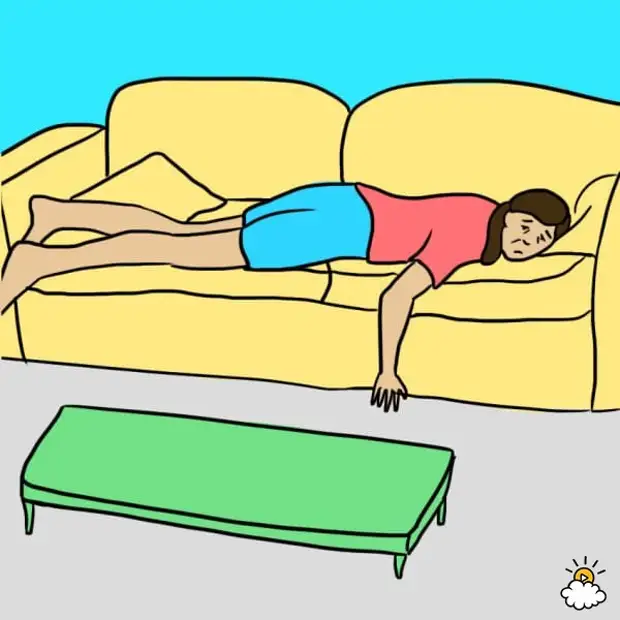
The depression that people with dementia feel can also manifest as apathy.
A person may lose interest in a once-loved hobby or suddenly refuse to go outside.
Apathy is also a sign of depression, so if this is the only symptom, it may not be dementia. However, if other symptoms are present, it may indicate a mental disorder.
Thinking and memory disorders
The peculiarities of thinking disorders in schizophenic dementia are that it is not disintegration that occurs, but a distortion of thought processes (generalization, abstraction, analysis, synthesis, classification, construction of logical connections).
This is expressed in:
- mentism – a sudden “influx” of thoughts with a lack of logical connection;
- sperunge - a break in thoughts in the middle of a phrase;
- slipping - the patient begins to speak, loses the “thread of reasoning”, moves on to another topic;
- reasoning (idle talk) - lengthy meaningless reasoning
- autistic thinking - the patient’s speech is directed “inward”, meaning is attached to special attitudes and fantasies that are incomprehensible to others;
- symbolism - understanding things in a figurative pathological sense, insignificant objects are given a special meaning;
- perseverations - the patient gives the same answer to different questions;
- fragmentation - complete loss of logic in speech;
- “verbal okroshka” - incoherent, incomprehensible speech.
Memory in schizophrenic dementia lasts quite a long time.
Speech disorders
Speech disorders are represented by:
- neologisms - the inclusion into speech of new words invented by the patient;
- verbigerations - the patient endlessly repeats the same words and phrases, rhymes them;
- echolalia - the patient repeats the last syllables, words of spoken speech;
- schizophasia (speech confusion) – speech is meaningless;
- mannerism - the patient speaks in florid “abstruse” sentences, as if reading a scientific report.
Diagnostics
Diagnosis of schizophrenic dementia is based on identifying the criteria for schizophrenia developed in the International Classification of Diseases ICD-10.
Signs of dementia are diagnosed based on special tests:
- proofreading test, Gorbov test (“red - black”), Schulte tables - violation of attention and short-term memory;
- pictogram, methods of “elimination of objects”, “classification of objects”, “generalization of objects”, “construction of a spatial-logical chain”, “associations” - impaired thinking;
- “10 words” technique, tests to determine the volume and type of memory;
- Wechsler test - determining the level of intelligence.
The diagnosis is complemented by observation of the patient - behavioral characteristics, appearance, facial expressions, gestures, communication with the doctor and others.
Course and prognosis
In the initial stage of schizophrenic dementia, the patient’s understanding of the environment is intact, he can perform basic actions of self-care, cleaning the room, ward, and is accessible to contact. Characteristic changes in speech and thinking are observed.
Gradually, cognitive impairment becomes deeper, the patient is removed from real life, and intellectual and practical skills are lost. The patient withdraws into himself and stops communicating. In far advanced stages, insanity sets in - the patient cannot control physiological needs, does not care for himself, is inaccessible to contact, and almost does not move.
With timely diagnosis and treatment, dementia can be stopped in the early stages and impaired cognitive functions can be temporarily restored. But with the next attack of schizophrenia, a return to the original state is possible.
Does dementia occur in children?
Dementia in children and young people is an acquired dementia, which is accompanied by the loss of already developed intelligence. With this disease, brain tissue is damaged, as a result of which memory, speech, analytical and cognitive abilities, and motor skills are impaired.
It is customary to talk about acquired dementia in children when the child reaches 2-3 years of age, when behavior can reveal noticeable deviations from normal mental development.
Overt, progressive dementia is most often observed in children after 15 years of age, when the biological maturation of the brain ends.
Causes of dementia in children
About 70% of all cases of acquired dementia are due to Alzheimer's disease, which primarily affects older people over 65 years of age. For this reason, dementia in young people is rare and is mainly due to hereditary factors.
Gene mutations in chromosomes provoke increased production of abnormal amyloid plaques, which affect nerve cells and destroy established interneuron synoptic connections.
Degradation of brain activity in people under 40 years of age can also occur as a result of mechanical head injuries, drug, alcohol or radiation intoxication, as a complication of chronic cardiovascular pathology.
Childhood organic dementia is usually a complication of some serious diseases. Secondary residual dementia occurs with stable residual disorders of the brain, without further deterioration of the patient’s condition.
The main causes of dementia in children and older people. Causes of dementia in children. Causes of dementia in adults.
|
|
Hereditary degenerative dementia in children develops against the background of such genetic diseases as Newman-Pick, Batten, Huntington or Lafora disease, Rett and Sanfilippo syndrome, leukodystrophy.
Hereditary forms of dementia progress rapidly as children grow and the clinical manifestations of the underlying genetic disease manifest.
An intense increase in symptoms can lead to death already in adolescence.
Important. Organic dementia in children, and especially in adolescents, is often aggravated by psychological trauma. The obvious loss of acquired skills has a painful impact on the child’s emotional state and can deprive him of his motivation for rehabilitation.
Symptoms of dementia in children
The clinical picture of the disease in children largely depends on the age of the victim. The sooner the process of degradation of the central nervous system begins, the more pronounced the symptoms of dementia in young people will be.
Until the age of 3, the most pronounced signs of dementia are a decrease in motor activity, sometimes the baby even stops walking and crawling.
At the same time, involuntary disinhibition appears, which is accompanied by sudden, jerking movements.
Such children are characterized by excessive capriciousness, increased excitability, instability of emotions with a transition from hysterics and crying to an unreasonable burst of joy.
Characteristics of children with dementia by age group include the following:
- in preschoolers - impulsive, disorganized and monotonous games, a tendency to throw and break toys, aimless and unexpected impulses to run, jump, lack of attachment to loved ones, even to the point of indifference towards the mother, a decrease in early acquired vocabulary and cognitive skills;
- in the primary school period - difficulties with attention and mastering new information, confusion in basic concepts about time, color, shapes of objects, weakening of the instinct of self-preservation in situations potentially dangerous to life and health, narrowing the range of interests, frequent complaints of fatigue;
- in high school – the development of children with dementia stops due to impairment of abstract thinking, instability of attention, disintegration of already developed intelligence and the inability to perceive, preserve and reproduce new knowledge; schoolchildren’s speech is unclear, blurred and incoherent;
- in adolescents - lack of critical thinking, degradation of behavior, ignoring social and legal norms, deterioration of vision and hearing, sudden changes in mood, depression, gluttony, unmotivated attacks of aggression, loss of communication skills, sexual disorders, promiscuity.
Reference. Dementia in adolescents is usually genetic. In addition to the brain, pathological changes also affect other vital organs, which significantly reduces the patient’s life expectancy.
Diagnosis and treatment of dementia in children
The neurodegenerative disease dementia in young people, as well as in old people, is an incurable and irreversible pathological condition.
The capabilities of modern medicine can only slow down the rate of its progression in children.
If there have already been cases of dementia among blood relatives in the family, then from the first months of life the child should be under constant supervision by a neurologist.
Childhood dementia is identified after a thorough study of the hereditary factor, general health indicators, and passing special cognitive tests. Instrumental examination using resonance scanning, CT, MRI, and EEG allows visualization and assessment of the degree of brain damage. Biochemical blood tests and genetic studies are carried out.
Symptoms and treatment of dementia in young people are determined by specialists in various fields: pediatricians, psychologists, psychiatrists, neurologists. Complex therapy must be constant, long-term and carried out under the strict supervision of doctors; as a standard, it includes the following measures:
- taking medications and vitamins to stimulate metabolism in nerve cells, nourish tissues, improve blood circulation in the brain, strengthen blood vessels;
- prescribing psychostimulants, nootropic substances to improve memory, attention, physical endurance, mental activity;
- consultations with psychologists and teachers;
- preventive measures aimed at increasing immunity, preventing injuries and diseases classified as risk factors.
Dementia in youth and children stops the normal physiological and mental development of a person.
Despite the poor prognosis, it is important to preserve the personality of the growing person, his desire to live and fight the disease.
Given the negative and alarming attitude of society towards mentally ill people, care must be taken to create a friendly environment that would facilitate the adaptation of such patients.
046
Source: https://demenciya.ru/demenciya/dementsiya-u-detej/
Treatment
The treatment is complex. Treatment of schizophrenia is carried out, observing the correct doses of antipsychotics, paying attention to the indications, timing and number of procedures of biological methods of therapy.
Symptoms of dementia are reduced with nootropics, vitamin and mineral complexes that improve brain function. In case of increased anxiety, stress factors in etiology, general sedation of the body is performed with tranquilizers and plant-based sedatives.
Great importance is attached to psycho- and sociotherapy. For schizophrenic dementia, art therapy is indicated (treatment with music, drawing, modeling, dancing), sand therapy, therapy for communicating with animals (horses, dolphins).
Occupational therapy has a positive effect - the work of patients in workshops, hospital gardens, parks.
What should relatives do?
Relatives of a patient with schizophrenic dementia need to:
- Undergo sessions of family psychotherapy, during which they will be explained the essence of the disease and given recommendations on how to properly communicate with such a patient;
- Carefully follow all instructions of your doctor.
- It is imperative to give the patient all possible mental and physical exercise - to solve simple household tasks (counting something, remembering where a certain thing is stored), cleaning the house, taking out the trash, washing dishes, watering flowers.
- Monitor your daily routine - be in the fresh air every day, get enough sleep, do as much exercise as you can, limit the use of electronic devices that have a stimulating effect on the psyche.
- Monitor the patient's proper nutrition.
- Help the patient take care of himself without scolding him, and treat his condition with understanding.
- The most important thing is to become a support for the patient, literally and figuratively, so that he feels protection, support, and love.
Living with such a patient is very difficult. Therefore, relatives are recommended to undergo psychotherapy themselves in order to look at the problem with different eyes, accept it and learn to live with it.
Author of the article: Veits Alina Emilievna, psychiatrist, candidate of psychological sciences
UE tasks. General guidelines
A practical lesson on this topic involves careful consideration of the following issues:. Composition and types of this crime. Its difference from sexual assault; When preparing for a practical lesson, it is necessary to study the resolution of the Plenum of the Supreme Court of the Russian Federation from Sergei Kasyanov often quarreled with his wife Taisiya, beat her, did not let her out of the house, and was jealous of all men.
Taisiya filed for divorce and stopped maintaining a close relationship with Sergei. One night, outraged by his wife’s behavior, Kasyanov, overcoming Taisiya’s desperate resistance, had sexual intercourse with her.
Are there grounds for bringing Kasyanov to criminal liability for rape? Can a wife be a victim in a criminal case of rape by her husband? Suffering from a mild degree of dementia, Shragin, who was in a drunken state, became inflamed with passion for his shepherd Blenda. To satisfy his sexual instinct, he tried to have sexual intercourse with her, but the dog bit off his genital organ.
Can an animal be recognized as a victim in cases of rape and sexual assault?
The director of the cafe, Fazaliev, when hiring young women, hinted to them that they needed to undergo a sexual test. Those women who did not agree to such a check were refused. Is Fazaliev’s behavior criminal?
If yes, then under what article of the Criminal Code should he be held criminally liable? To this end, he invited the girl to his room, showed her an orange and said that she would receive it as a reward if she played the role of wife well. Then he exposed himself and offered to do the same to Khrymova. She complied and allowed him to have sexual intercourse with her. What does it matter in this case that Khrymova suffered from mental illness?
Uchaev, walking to the platform to board the train, met summer Sonya O, who was walking home from school, dragged her into the bushes and tried to have sexual intercourse with her. The girl began to scream loudly, calling for help.
Only the year-old Sanukova responded, who, seeing the half-naked Uchaev, threatened him with a stick. Frightened by the appearance of other people, Uchaev fled the scene. Are there signs of a voluntary renunciation of crime seen in his behavior? At the disco, Chebukov, having smoked marijuana, began pestering Lelikova, inviting her to immediately have sexual intercourse with him. Lelikova refused. Then Chebukov threatened her that if she did not give in to him, he would go to the microphone and tell everyone that Lelikova had syphilis.
Frightened by the threat, Lelikova allowed Chebukov to take her to the men's room, where he performed sexual intercourse with her. Cheskidov lured 8-year-old girls Lena K. After which he released them. After the dance, Lukin walked her home, and she invited him for a cup of coffee. During the meeting, Lukin began to pester Sidorova, inviting her to have sexual intercourse with him. The girl refused, saying that she was still underage. Then Lukin, threatening to kill, began to strangle Sidorova, and when she screamed, he dragged her away from the front door.
Uryupina’s neighbor came running to her scream and knocked on the door of Sidorova’s apartment. Frightened, Lukin left Sidorova alone and jumped out the window. Does the fact that Sidorova informed Lukin about her alleged minority affect her qualifications?
Pasevich and Khorkhunov, having met Kostikova and Amilkhanova, offered the girls a boat ride. They agreed. The young people took them to a remote place and invited them to go ashore to rest.
When the girls were on land, Pasevich and Khorkhunov demanded to perform sexual acts with them. They refused. The men began to threaten to kill the girls if they did not agree to their proposal.
Then each of them, separately, using force, separated Kostikova and Amilkhanova in different directions and, continuing to threaten, committed violent sexual acts. The convicts Brichkina, Kolotov, Garpunkov, Leshchev and Marenko, who were serving sentences of imprisonment in a general regime correctional colony, attacked production foreman Shmatkov, tied him up and stripped him. Then, while manipulating his genitals, they forced Shmatkov to perform sexual acts with them. Since for physiological reasons he was only able to have sexual intercourse with Brichkina, the rest of the indignant women beat Shmatkov, causing serious harm to his health.
For greater persuasiveness, he showed the ID he had made as an employee of the Foreign Intelligence Service. Some of the women agreed. The child was not asked to leave, but was not forced to remain on the bed. Lyudmila told her father about what she saw, after which he contacted the prosecutor's office with a request to initiate a criminal case against the Chirmizovs.
File archive of students. Login: Password: Forgot your password? Email: Login: Password: I accept the user agreement. FAQ Feedback Questions and suggestions. Added by: Upload Does the published material violate your copyright? Let us know. Downloads: Chapter 20 Crimes against sexual integrity and sexual freedom of the individual Methodological instructions for the topic A practical lesson on this topic involves careful consideration of the following issues: - rape.
Its difference from sexual assault; — features of qualification of compulsion to actions of a sexual nature; — the difference between sexual intercourse and other acts of a sexual nature with a person under age from rape and violent acts of a sexual nature; — features of qualification of indecent acts.
How to evaluate Shragin's actions? Is Vechkanov subject to criminal liability? How to evaluate Uchaev’s actions? Are there grounds for bringing Chebukov to criminal liability? How to qualify Cheskidov's actions? How to evaluate Lukin's behavior? How to qualify the actions of Pasevich and Khorkhunov?
Are there signs of a group crime in their behavior? Give a legal assessment of the actions of convicted women. Assess Narcissov's actions. Are there elements of this or that crime in his actions? How to evaluate the behavior of the Chirmizovs?
